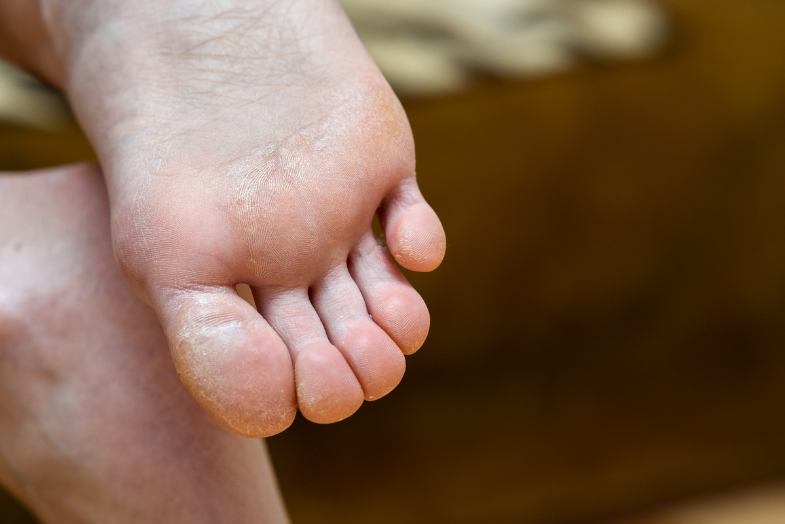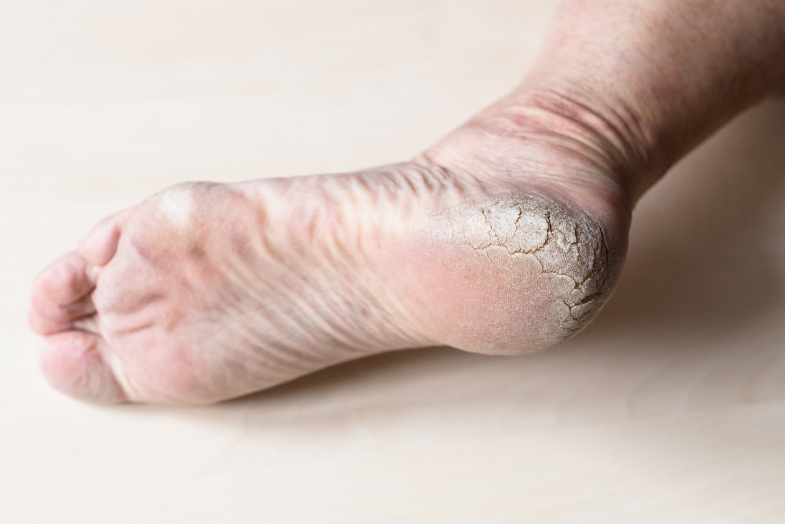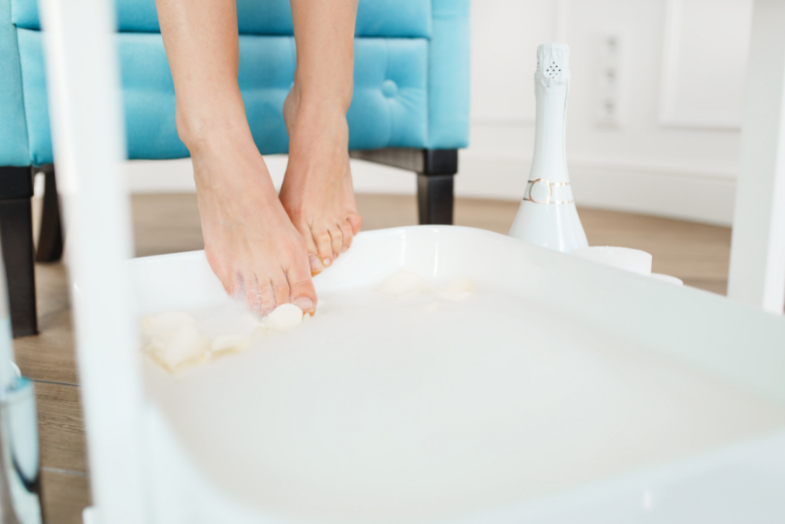How to Get Rid of Calluses
There are many ways to develop calluses and many places on your body that you can develop them. Most people tend to get calluses on their feet because they are caused by applying pressure to the same point on the skin over and over again.
Think about how much you walk around in uncomfortable shoes or just barefoot around the house. It’s no surprise that you might develop a callus or two especially if you have a job or hobby that requires you to constantly be on your feet.
While calluses generally don’t hurt and are not indicative of any medical problems, many people simply don’t like how they look. Follow along to learn how you can get rid of your calluses safely and quickly.
 What is a Plantar Callus?
What is a Plantar Callus?
If you’re not familiar with calluses, you might be wondering what a plantar callus is. These are some of the most common calluses that people tend to develop.
Essentially, a plantar callus is a patch of thickened skin on the bottom of your foot. If you have one, you’ll notice that it feels tougher than other spots on your skin. You might not even be able to feel that anything is touching your foot when pressure is applied to the area.
Sometimes plantar calluses can become uncomfortable. Luckily, they are very treatable. In fact, most remedies for a plantar callus use everyday items that are probably already in your home.
When to Seek Professional Care
Usually calluses are not a cause for concern. When you find one on your foot or anywhere else, you can generally ignore them and they’ll probably go away.
However, it’s important to note that while calluses are generally not harmful to you, there are still some cases in which you should see a doctor for the condition. Seek medical attention if your callus:
- Begins leaking pus
- Begins changing colors
- Begins bleeding extensively
Your doctor might give you antibiotics or refer you to a podiatrist to inspect and treat these conditions. You should also seek a professional’s help if you have diabetes or a preexisting foot problem. Calluses are more likely to become serious problems if you already have these conditions.
Identifying a Callus
If you’re not sure whether you have a callus or not, here are some of the identifying symptoms:
- Appears gray or yellow in color
- Feels hard, rough, dry, or flaky to the touch
- Can be painful if direct pressure is applied
- Can cover large or small areas of skin
 Calluses are often confused with corns and plantar warts, so it’s important to know the difference before you begin your at home treatment.
Calluses are often confused with corns and plantar warts, so it’s important to know the difference before you begin your at home treatment.
Corns, like calluses, are hardened layers of skin that come about when your skin tries to protect itself from constant friction. Corns tend to be small, thick, and rough areas on the skin. The skin will be hard and raised, and you might experience pain or tenderness when touching the area.
Plantar warts are similar to corns and calluses in that they are small, rough growths on the skin. Sometimes they will appear as a cluster on the skin. You’ll also notice black pinpoints called wart seeds, which are actually tiny clotted blood vessels.
Know what you’re working with before you begin your at home callus removal treatment. To help you identify the problem, look up pictures of all three of these conditions as well as descriptions of each problem. This way, you’ll be able to tell the difference.
At Home Callus Removers
Most of the time, calluses can be cured right in your very own home. The first course of action to take when trying to get rid of a plantar callus is to soak your feet in warm water. Soak your feet for about 20 minutes and see if you can begin to peel the skin of the callus off. You might need to do these steps a handful of times before the callus is fully removed.
When soaking your feet, you can also use any number of the following in a mixture with water to help break down the callus even more:
- Castor oil
- Epsom salt
- Tea tree oil
- Baking soda with lemon juice
- Apple cider vinegar
You can also apply skin softening cream or petroleum jelly to the affected area, as well as exfoliating cream. There are also tools called foot files that exist for the purpose of breaking down tough skin. People tend to use foot files in the shower or bath.
Callus Prevention Methods
There are some steps that you can take to prevent yourself from developing calluses on your feet. If you are constantly trying to get rid of plantar calluses, you should consider taking some of these preventative measures.
First, you want to make sure that you are wearing comfortable and properly fitted shoes and socks. Wearing shoes and socks that are uncomfortable or that don’t fit correctly is one of the biggest causes of plantar calluses.
Additionally, if you find yourself going barefoot a lot and developing these calluses often, try wearing socks more. You can also pad your shoes with arch supports which will reduce friction.
How to Get Rid of Calluses on Feet
Usually a plantar callus is not a big deal. If you already have issues with your feet or if you have diabetes, your case is more likely to turn severe. We recommend going to your doctor immediately if you are affected by these conditions, and you have developed a callus.
If you are affected by calluses and the at home remedies don’t seem to work, reach out to us at Foot & Ankle Specialists of Illinois (FASI). We provide comprehensive foot care to clients in Algonquin, Huntley, Carpentersville, and surrounding areas.
Foot and ankle health is one of the most important parts of establishing your overall health and wellness. When your feet are in good physical condition, it makes everything else a lot easier. Visit our website or contact us for more information about our services and book an appointment today!


